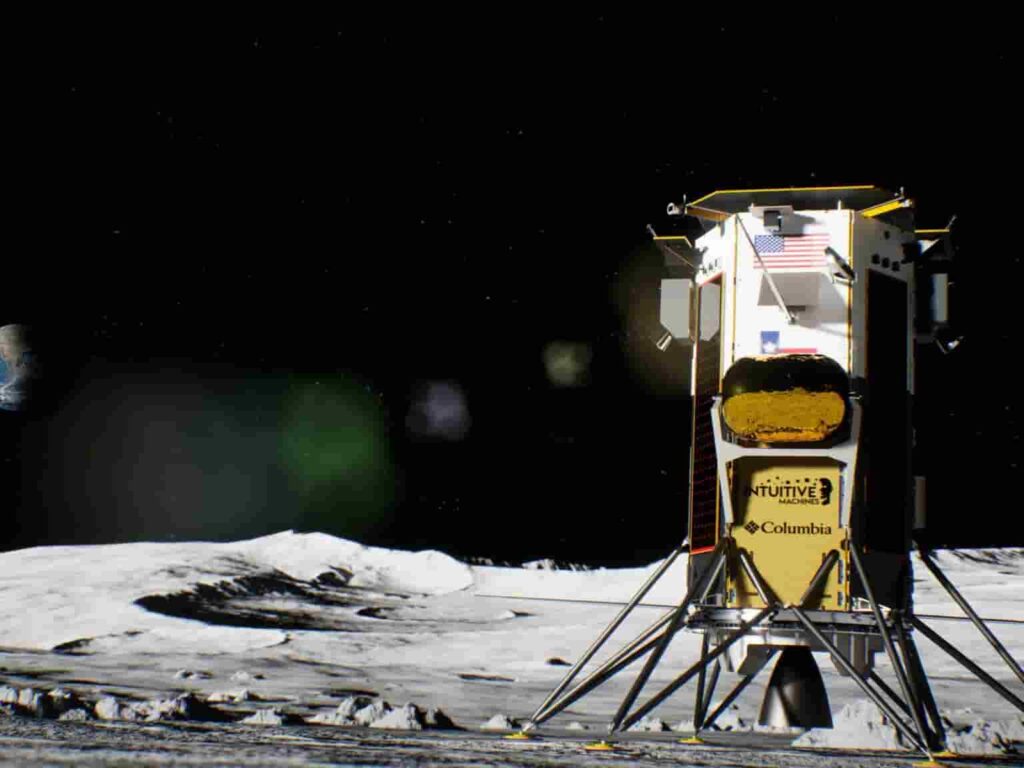Discover the historic lunar touchdown by a U.S. spacecraft, marking a milestone in space exploration.

The recent lunar touchdown achieved by a spacecraft built and operated by Texas-based company Intuitive Machines marks a significant milestone in space exploration, particularly for the United States. This event represents the first U.S. landing on the lunar surface in over 50 years and is notably the first achieved by the private sector.
The successful landing near the moon’s south pole on Thursday was a momentous occasion, hailed by NASA as a major achievement in its ongoing efforts to explore and understand Earth’s natural satellite. The spacecraft, named Odysseus, carried several research instruments onboard, symbolizing a crucial step forward in NASA’s objective of utilizing commercially flown spacecraft for scientific exploration missions to the moon. This development is part of NASA’s broader plan to send astronauts back to the lunar surface later in the decade.
Also Read:- AT&T Network Outages Cause Nationwide Disruptions: Emergency Services and Users Affected
However, despite the celebratory nature of the landing, initial communication challenges arose following the touchdown, raising questions about the spacecraft’s condition and functionality. Engineers encountered issues with the autonomous navigation system during the final approach and descent, prompting last-minute interventions to ensure a successful landing. Subsequent efforts to establish communication with the spacecraft were met with difficulties, leading to uncertainty about its precise status and orientation.
Despite these initial setbacks, the landing itself represents a significant achievement for both Intuitive Machines and the broader space exploration community. The successful deployment of Odysseus on the lunar surface opens new possibilities for scientific research and exploration, paving the way for future missions and discoveries.
Also Read:- Prominent HIV/AIDS Activist Hydeia Broadbent Passes Away at 39
One of the key objectives of the Odysseus mission is to deploy its payloads and conduct scientific experiments to gather valuable data about the lunar environment. This data will contribute to our understanding of space weather interactions, radio astronomy, and other aspects of the moon’s surface. Additionally, the mission aims to demonstrate the feasibility of sustained operations on the lunar surface, with Odysseus designed to operate for seven days on solar energy before sunset.
The significance of this achievement is further underscored by its historical context. The last controlled descent to the lunar surface by a U.S. spacecraft occurred during the Apollo 17 mission in 1972, making Odysseus’ landing a momentous event in space exploration history. Moreover, Odysseus represents the first “soft landing” on the moon by a commercially manufactured and operated vehicle, highlighting the growing role of the private sector in space exploration initiatives.
NASA Administrator Bill Nelson expressed enthusiasm for the successful landing, describing it as a “triumph” for the agency and its partners. The location of the landing, near the moon’s south pole, holds strategic significance due to the presence of frozen water that could potentially support future lunar exploration efforts.
Looking ahead, the successful deployment of Odysseus sets the stage for further advancements in space exploration under NASA’s Artemis lunar program. This program aims to return astronauts to the lunar surface, with the first crewed mission scheduled for late 2026. By leveraging commercial partnerships and innovative technologies, NASA aims to establish a sustainable human presence on the moon as a stepping stone towards future missions to Mars.
Also Read:- Behind Bars: The Decline of FTX Founder Sam Bankman-Fried Revealed in Prison Photo
Despite the challenges and uncertainties inherent in space exploration, the successful landing of Odysseus represents a remarkable achievement that pushes the boundaries of human exploration and scientific discovery. As the journey continues, with Odysseus poised to fulfill its mission objectives, the future of lunar exploration looks brighter than ever before.
